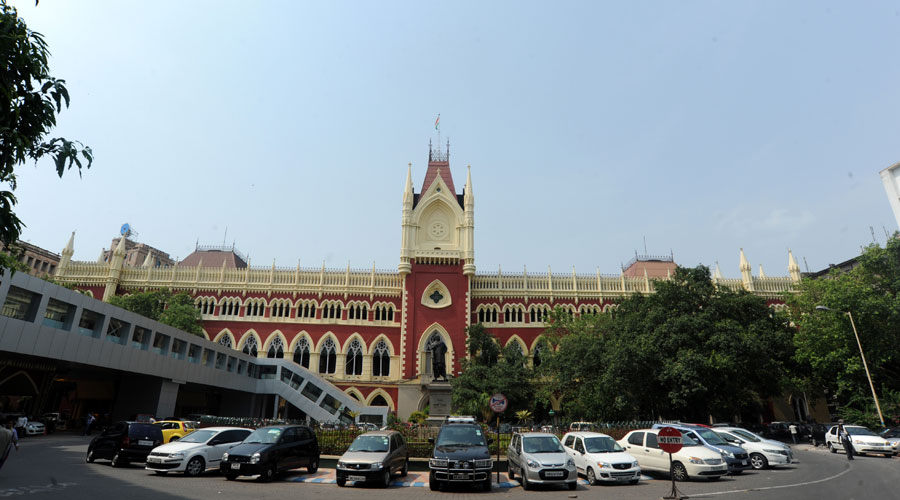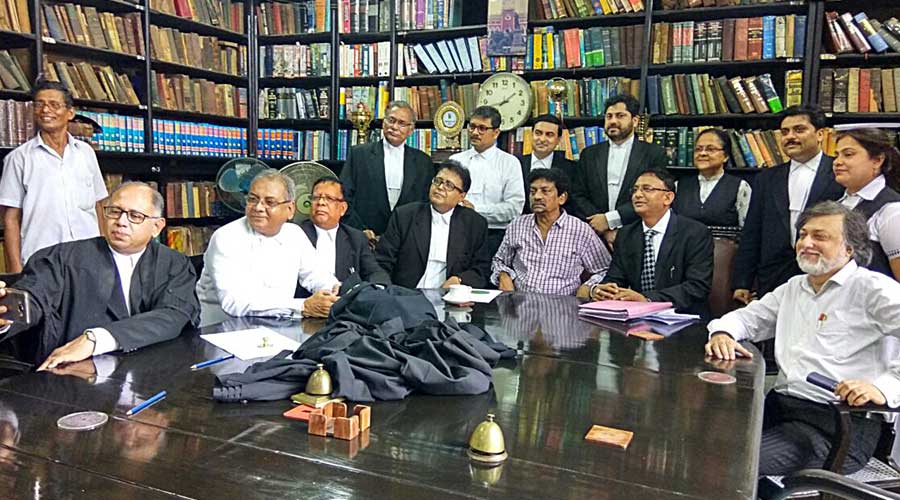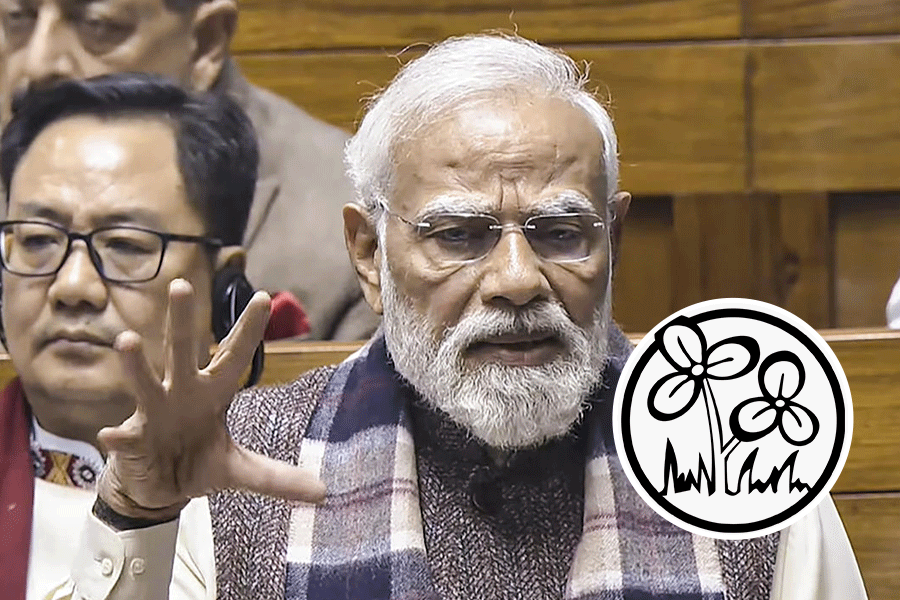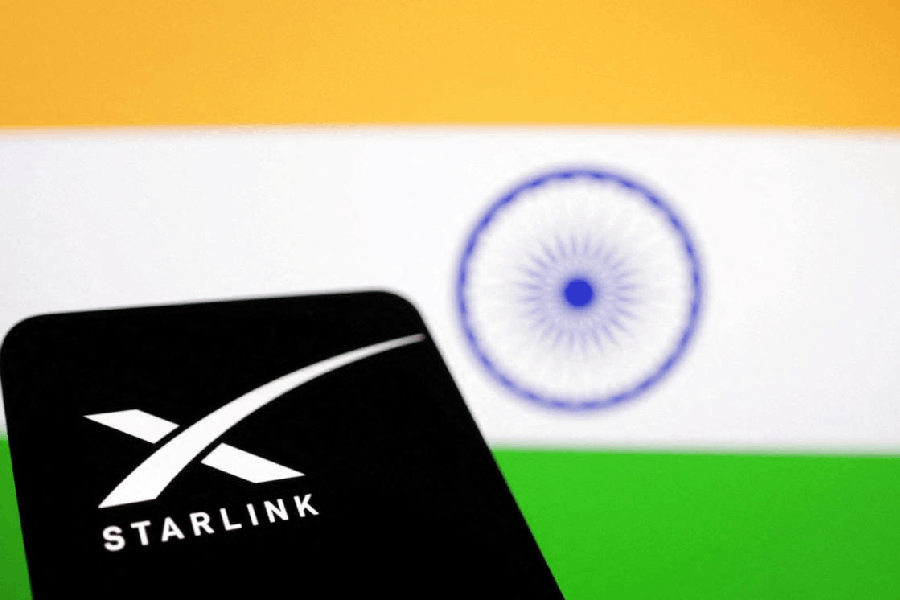The sky over River Hooghly is stained with smoke from passing ships. The camera turns from sky to skyline marked with multi-storey buildings and then zooms into the majestic red-and-yellow building. A familiar voice — it belongs to actor-director Aparna Sen — breaks the silence of the morning scene. She is saying, “The Hooghly flows past many historic landmarks of Calcutta. Prominent among them is this century-and-a-half-year-old Gothic-style building that architecturally emphasises its role in dispensing justice.”
Filmmaker Goutam Ghose’s documentary on the Calcutta High Court, A Temple to Solomon, was screened at the Calcutta Film Festival earlier this year but awaits formal release.
“I had no plans of making a documentary on this historic building. And had it not been for a proposal from Justice (Soumen) Sen, I would never have ventured into it,” says Ghose. He adds laughing, “Call it my misfortune or good fortune, but I have never had to go to court for any legal matter.”
While Ghose has his camera trained on the high court, Sen and actor-writer Jagannath Guha — also the scriptwriter of this documentary — narrate the story. Guha is no more though; he died last year of Covid-19-related complications.
Ghose has been working on it for four years, interviewing novelists, historians and senior advocates of the Calcutta High Court, and building the narrative. He has also sifted through archival material.
Jayanta Sengupta, the secretary and curator of Victoria Memorial Hall, is also a member of the committee formed to document the history of the high court. He says, “Victoria Memorial is rich in photographs, lithographs, aquatics and maps of old Calcutta.” Ghose has used some of these to portray the olden cityscape. Images of open fields, scattered buildings on Esplanade, palanquins, horse carts, Europeans in motor cars and so on.

Calcutta High Court Pradip Sanyal
The court building is a copy of a medieval commercial building known as Cloth Hall in the Belgian town of Ypres.
The narrative picks up as Ghose interviews Sankar — Mani Sankar Mukherjee — who was Barwell’s Baboo or the clerk of Noel Barwell, the last British barrister practising at the Calcutta High Court.
Sometimes Ghose likes to do a detour. For instance, the time his camera wanders and stops at St. John’s Church, the first public building erected in Calcutta by the East India Company. Guha narrates, “Human habitation is invariably marked by the establishment of new places of worship. St. John’s is one such landmark of a British settlement firmly rooted in the soil of Bengal.”
The camera dives into the 160-year-old building again. It feels a bit like Alice falling through the rabbit hole — journeying past pillars, archways and columns to the strains of music. Debojyoti Mishra, once violinist to Satyajit Ray, evokes Bach and Vivaldi. “My music is not only a combination of notes, it is a musical narration of this huge baroque structure steeped in colonial history.”
For Ghose, the court building is quite literally a touchstone. His film chronicles the layered judicial history of Calcutta. His search takes him to Calcutta’s “barefoot historian” and BA, LLB, P.T. Nair, who has done extensive research on the subject. He tells Ghose the history of the judicial system of Calcutta dates back to 1690.
Ghose’s camera lingers on Nair’s lined face as he goes on, “The Sabarna Ray Chowdhurys, who were the owners of Calcutta, had some kind of judicial system in place.” That would be the late 17th century. A map fills up the screen. Kalikata, Sutanuti and Gobindapur. Nair says, “We had got some kind of judicial arrangement in Calcutta, although it might not have been far superior to the British system.”
In 1696, the British took over Calcutta and Mughal law came to be administered through the Sadar Diwani Adalat and Sadar Nizami Adalat. 1726. The British established the Supreme Court of Judicature inside Fort William. Guha talks about how Sir William Jones, founder of the Asiatic Society, joined the Supreme Court Judge’s bench. It seems, his understanding of the local traditions made the English Common Law more acceptable to the local people.
The eras zoom. Pictures of Sati, infanticide, forced labour. Eleven-year-old Phulmani, her torture, death and the consequent Age of Consent Act, 1891.
Ghose’s camera races through the wide passage of the high court, scans the figurines and floral patterns on the wall as if in search of more history. Mishra’s music strikes the high notes and reaches a crescendo before the screen goes black. The camera swings out. The court premises come up on screen and a different music — typists at their machines — tip tap tip tap, ghrrr...
Joymalya Bagchi, who is a former judge of the Calcutta High Court, talks about how the Andaman Islands came under Bengal’s jurisdiction from 1869. More interviews. Shaktinath Mukherjee, senior advocate of the Bar Association, talks about the role of a court in society. Justice Ruma Pal, a former judge of the Supreme Court, has a different concern. She says, “Both the words ‘law’ and ‘lawyer’ are gender neuter, and yet you say a lady lawyer, lady judge as if the men have appropriated the word to connote men only.” Justice Chittatosh Mookerjee, former Chief Justice of the Calcutta High Court discusses the vast scope of law.
The documentary ends where it had begun — only this time the camera swings from the red building to a clear blue sky.










